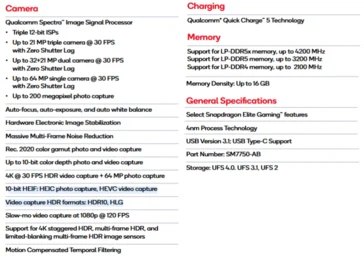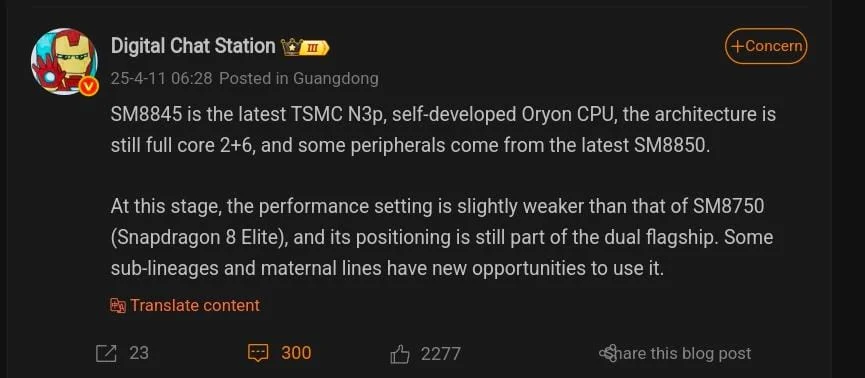Key Takeaways
1. Qualcomm will host the 2025 Snapdragon Summit from September 23 to 26 to unveil the Snapdragon 8 Elite 2 chipset.
2. The Snapdragon 8 Elite 2 features Qualcomm’s second-generation Oryon CPU architecture, with significant performance improvements in CPU and GPU.
3. It is expected to achieve over 4,000 points in single-core and more than 11,000 points in multi-core benchmarks, surpassing its predecessor.
4. The chipset will include a 16MB GMEM cache and an upgraded Adreno 840 GPU for enhanced graphics performance.
5. Xiaomi is likely to be the first brand to launch smartphones with the Snapdragon 8 Elite 2, along with other brands like OnePlus, iQOO, and Honor.
Qualcomm is set to host the 2025 Snapdragon Summit from September 23 to 26 this year. During this event, the American chipmaker is anticipated to unveil the Snapdragon 8 Elite 2, which will be the driving force behind the upcoming flagship smartphones. A recent post on Weibo from trusted source Digital Chat Station indicates that this new SoC will offer remarkable enhancements in both processing and graphical capabilities.
Snapdragon 8 Elite 2: Enhanced Performance in CPU and GPU
According to the leaked information, the Snapdragon 8 Elite 2 will feature Qualcomm’s second-generation Oryon CPU architecture. In Geekbench 6 tests, this chipset is said to aim for over 4,000 points in single-core benchmarks and more than 11,000 points in multi-core performance. This marks a considerable upgrade from the first-generation Snapdragon 8 Elite, which achieved scores of about 3,100 and 9,800, indicating a significant performance leap.
Specifications and Features
The platform is also rumored to come with a 16MB GMEM cache and an upgraded Adreno 840 GPU, specifically designed to manage demanding visuals and graphics-intensive applications seamlessly. These enhancements point to an emphasis on efficiency and improved thermal management for future flagship devices.
The Snapdragon 8 Elite 2 is expected to utilize a 2+6 CPU configuration, with a peak clock speed reaching 5GHz, showing notable advancements compared to its predecessor. It is likely to be manufactured using TSMC’s third-generation 3nm process, boasting a base frequency of 4.4GHz, which is a bit higher than the previous generation’s 4.32GHz.
Anticipated Launches
Following past trends, Xiaomi is predicted to be the first brand to release smartphones powered by this new chipset, particularly the Xiaomi 16 and Xiaomi 16 Pro. Other brands expected to adopt the chip early include OnePlus with its 15 series, iQOO’s 15 and 15 Pro, the Honor Magic 8 series, Realme’s GT 8 Pro, Nubia’s Red Magic 11 series, and the Redmi K90 series.
Moreover, the Oppo Find X9 Ultra and Vivo X300 Ultra, set to debut next year, are also likely to feature this new chip. However, it remains uncertain if the Xiaomi 16 Ultra will use the Snapdragon 8 Elite 2 or opt for the company’s proprietary Xring SoC.

















